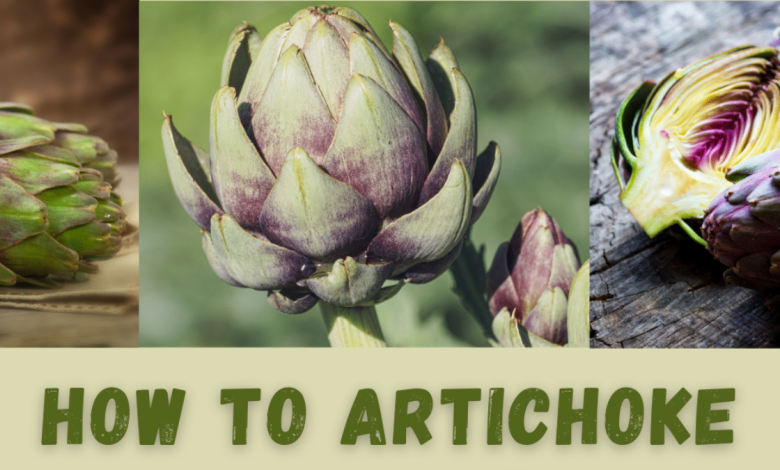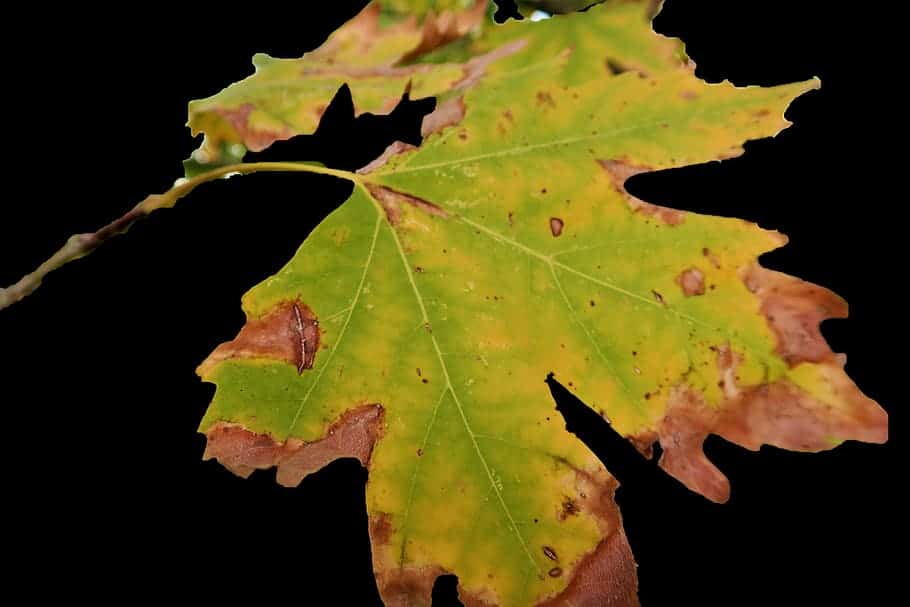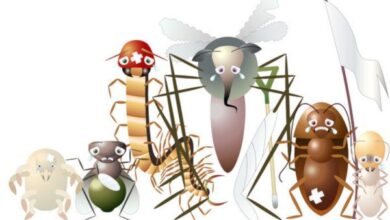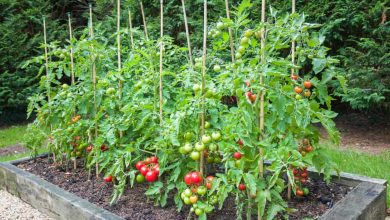Plant Artichokes: The Most Efficient Way in [12 Steps]

If you have come this far, it is probably because you want to learn how toplant artichokes.. And if you don’t want to, you should. But why?
Because in addition to being an excellent companion for many culinary dishes, it is a plant that is precious when it blooms.
The best of all is thatyou have come to the right place. Really. Keep reading and I promise you that in a few steps it will be very clear to you how to plant artichokes.
Plant Artichokes Step by Step:
- When? Spring season.

- Where? Area that receives sun, although it is not necessary all day. About 5 or 6 hours is enough.
- Harvest time? 3 or 4 months after sowing.
- How do we prepare the land? Light, rich in humus. Stirred and aired. If it is dry, moisten with previous irrigation. With a good contribution of organic matter.
- How do we pay? Animal organic matter. It doesn’t have to be very broken.
- How do we sow? With seeds, we bury the seeds a couple of centimeters and leave a distance of between 40-50cm.
- How do we water? Ideal, with drip.
- How often do we water? In summer daily. The rest of the stations every 3 days depending on the rains.
- How do we harvest? We cut the stem when it reaches 15cm and the head has a good color.
- What diseases do you have? Excess moisture (fungi), aphids and screwworms.
- What good associations do you have? Onion, lettuce, peas, green beans and broad beans.
- What bad associations do you have? None known.
Artichokes are a type of leafy vegetable whose main characteristic is that of being a winter plant.
The artichoke is very tasty and can be used in many culinary dishes.
In this article you will learn how to plant artichokes step by step in your garden.
Did you know…The artichoke is the adaptation of wild thistles that has been made for centuries in the Mediterranean basin. In fact, when the planting of artichokes is abandoned, they can become wild and we can find them small and thorny (hardly edible).
 One of the positive parts of the artichoke is that we can prepare it to eat in almost any way: boiled, sautéed, grilled, next to a tortilla, battered, with puree, with garlic or simply raw in a salad.
One of the positive parts of the artichoke is that we can prepare it to eat in almost any way: boiled, sautéed, grilled, next to a tortilla, battered, with puree, with garlic or simply raw in a salad.
Either way, you’ll likely find pleasure in eating this flowering vegetable.
In addition to what has been said above, the artichoke is an excellent plant to add color to your orchard or your garden.
When allowed to mature and bloom, the flower takes on a very spectacular intense red color.
Artichoke properties
As a good vegetable, we can find a good handful of positive properties in the artichoke. Among them we highlight the following:
- Diuretic, energetic and stimulating properties.
- They are choleretic, depurative and antianemic.
- They have Vitamin A, B1, B2, C and PP.
- They also have minerals such as calcium, phosphorus, iron, magnesium and sodium.
When do we plant the artichokes?
Artichokes require a temperate climate, on the cold side. However, they do not tolerate frost well, nor do they tolerate excessively hot days.
It is ideal to start the cultivation of artichokes in the months of March and April.
Areas such as the Mediterranean in winter, spring and autumn are usually good for this vegetable.
Therefore, we will plant artichokes in the months that make up spring, autumn and winter. Therefore between April and May.
Where to plant artichokes?
 The artichoke requires sun, like most vegetables. However not excessively.
The artichoke requires sun, like most vegetables. However not excessively.
About 5-6 hours a day might be enough.
Even in hot summers it is interesting to plant them in an area that receives shade for a good part of the day.
You will need space, since the artichoke, in addition to growing between 1 meter and 1.5m high, also extends considerably in width (approximately 1m).
How do we prepare the soil?
 The artichoke is a demanding plant with the soil.
The artichoke is a demanding plant with the soil.
We want a stirred and aerated soil. That it has depth and is rich in humus. We will also incorporate animal organic matter, preferably well decomposed.
We will avoid heavy and dry soils. Before planting artichokes, it is interesting to remove the soil with a motorized tiller. Make sure the compost is well mixed.
Once the above is done, we will do a general watering to moisten the earth, not to flood it.
How do we pay for the artichokes?
Artichokes require a good supply of compost. An area that has had a previous crop is ideal. But in addition, organic matter must be added. Ideally, it should be of animal origin, such as manure.
At the beginning we will give a subscriber of about 7-10 kg per square meter. Then, we will add homemade organic matter such as compost as the plant grows, at least in the initial phases.
How do we water and how often?
Artichokes are also picky about watering. However, they do not tolerate excess water and waterlogging well. So we must avoid them.
As always, the ideal irrigation option is drip irrigation.
We will water every 2-3 days, for about 30-40 minutes. In summer times we will increase the frequency of irrigation daily.
Trick:Artichokes are good at getting your attention. One way to see if they need water is by looking at the leaves. When the leaves are drooping or showing signs of wilting, they need water.
How to plant artichokes?
 Artichokes can be sown directly outdoors, and with seeds.
Artichokes can be sown directly outdoors, and with seeds.
However, we recommend that it be during the month of April. This month offers the best weather conditions for its growth.
We want to sow some seeds every 40-50cm. When they begin to grow we will eliminate the weakest stems that come out (pruning).
If we have artichoke seedlings, things get much easier. We will wait for the month of May to sow the seedlings.
It is convenient to place the seedlings at a distance of 90cm between them. You should also make sure that the soil is sufficiently fertilized and with a pH of approximately 6.5.
To know more, you can see: Artichoke cuttings.
How are they grown?
Artichokes can be made tall. Especially if it rains or is given enough water.
If this occurs, you are in luck, however you must make sure that the plant does not split due to the weight. It is important that when necessary you get a stake or a stick and support the artichokes on it. Similar to tomato plants.
How do we harvest the artichokes?
We can harvest artichokes for several years. So you want to take care of them.
Artichokes can be harvested 3 or 4 months after sowing.
The first season only a single head will be produced on the main stem. In the following years several heads will be produced and the plant will be larger.
We will cut the head of the artichoke when it reaches about 15cm of stem and we will see that it has a good color. It is important not to wait for it to flower, in which case it will no longer be edible.
What pests and diseases do they have?
 We must remember that the artichoke has been adapted by the human being, from the thistle.
We must remember that the artichoke has been adapted by the human being, from the thistle.
So it will be much less resistant and vulnerable to pests and diseases than this one.
Excess moisture causes fungi and cryptogamic diseases.
When the irrigation is too high and the nitrogen fertilizers too, it is common to find the aphid. The aphid is located at the bases of the artichoke and on some leaves, wreaking havoc on the plant.
Applying neem extract is usually an ecological solution to aphids.
There are also screwworms, which enter the stem of the artichoke and sometimes reach the head. Butterfly traps are usually a good measure against them.
verticillium wilt
 Verticillium or Verticillium wilt is a common soil fungus that thrives in temperate climates around the world and can be present in the soil for decades.
Verticillium or Verticillium wilt is a common soil fungus that thrives in temperate climates around the world and can be present in the soil for decades.
Verticillium wilt overwinters in the soil as dormant mycelium or tiny dormant black structures called microsclerotia, waiting for favorable conditions to return.
They enter damaged plant tissue through the roots and multiply. Many common weeds, such as dandelions and weeds, can be Verticillium host species.
Verticillium wilt is a disease that affects more than 350 species of eudicolous plants. It is caused by six species of Verticillium fungi: Verticillium dahliae, Verticillium albo-atrum, Verticillium longisporum, Verticillium nubilum, Verticillium theobromae, and Verticillium tricorpus.
Many plants with significant economic weight are susceptible, such as cotton, tomatoes, potatoes, oilseed rape, aubergines, peppers, and ornamental plants, as well as others in natural vegetation communities.
Many species and cultivars of eudicots are resistant to the disease, and all monocots, gymnosperms, and ferns are immune. To know more: Verticillium wilt in the Orchard: What is it? How do we identify it?
What good associations do you have?
The most favorable are:
- Onions.
- Broad beans.
- Green peas.
- Lettuce.
What do we NOT sow with them?
No unfavorable associations are known for the artichoke.




![Photo of Plant Bird’s Nest: [Planting, Care, Irrigation and Substrate]](https://www.complete-gardening.com/wp-content/uploads/2022/08/plant-birds-nest-planting-care-irrigation-and-substrate-390x220.jpg)